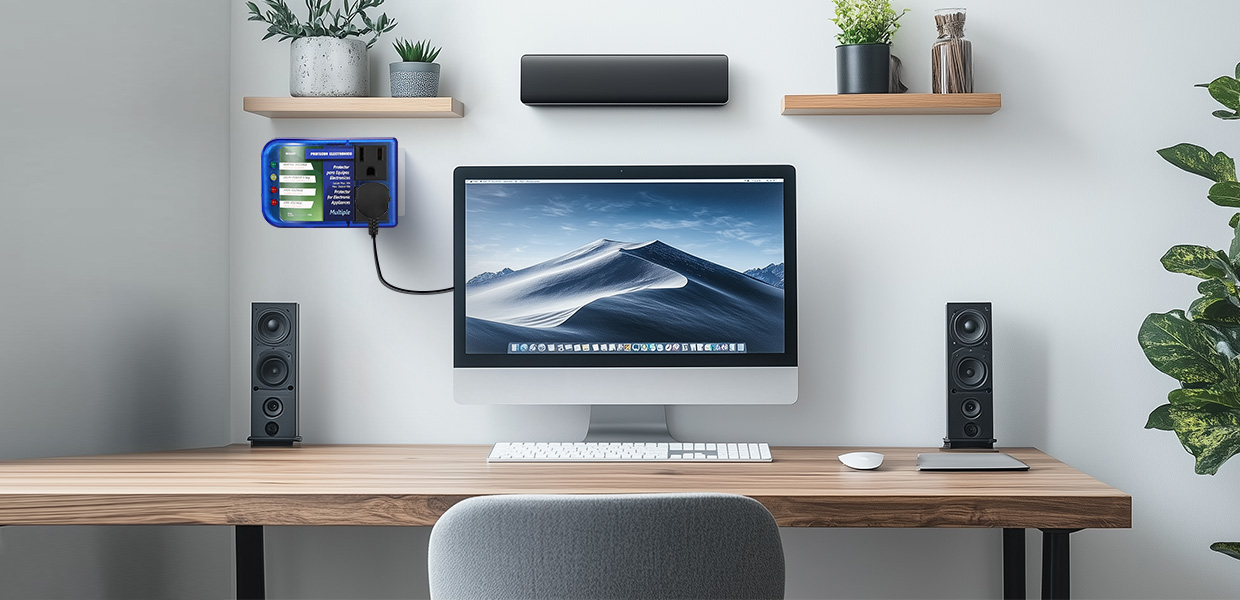Surge protectors are essential for safeguarding electronics, but choosing between home and commercial models depends on your specific needs. While home units prioritize affordability and simplicity for everyday devices like TVs and laptops, commercial-grade protectors are engineered to handle high-stakes environments with heavy machinery, servers, or critical infrastructure.
Whether you’re shielding a home theater or a data center, understanding these distinctions ensures your devices stay protected against unpredictable power spikes.
Purpose and Environment
Home Surge Protectors: Designed for residential use, protecting everyday electronics (TVs, computers, routers, small appliances).
Commercial Surge Protectors: Built for offices, data centers, or industrial settings with heavy-duty equipment, servers, and machinery.
Key Differences
| Feature | Home Surge Protectors | Commercial Surge Protectors |
| Joule Rating | 600–2,000 J (handles minor surges) | 2,000–10,000+ J (absorbs large, frequent surges) |
| Outlets | 1–12 outlets, standard spacing | 12–24+ outlets, wider spacing for bulky plugs |
| Plug Types | Standard 120V/220V | Twist-lock, 240V, or three-phase options |
| Clamping Voltage | ~400V (starts diverting surges at this threshold) | ~300V or lower (faster response for sensitive gear) |
| Durability | Plastic housing, basic design | Metal/industrial-grade housing, ruggedized |
| Features | USB ports, coaxial/Ethernet protection | Network monitoring, alarms, redundancy, remote management |

How to Choose
Environment: Home for everyday use; commercial for high-stakes or industrial settings.
Devices: Match the Joule rating to your equipment’s value and sensitivity.
Power Needs: Ensure voltage/amperage compatibility (e.g., 240V for machinery).
Surge Risk: Commercial settings may face frequent surges (e.g., data centers).
Budget: Invest in commercial-grade for critical systems; home models suffice for basic needs.
Lifespan & Warranty
| Factor | Home Surge Protectors | Commercial Surge Protectors |
| Typical Lifespan | 3–5 years (shorter due to lighter materials and infrequent replacement). | 5–10+ years (built with industrial-grade components for continuous use). |
| Degradation Causes | → Frequent small surges → Overloading outlets → Heat/age weakening MOVs (surge-absorbing components). | → Heavy-duty surges → Sustained high energy loads → Environmental wear (dust, moisture). |
| Replacement Triggers | → Indicator light turns red → Post-major surge event (even if functional) → Physical damage. | → Surge counter reaches limit (advanced models) → Network monitoring alerts (smart units). |

Conclusion
Choose a home surge protector for everyday electronics and minor surges. Opt for a commercial surge protector if you’re safeguarding high-value equipment, industrial machinery, or critical infrastructure. For comprehensive protection, consider a whole-house surge protector (residential/commercial) paired with localized strips. Always prioritize certifications and Joule ratings aligned with your needs.




